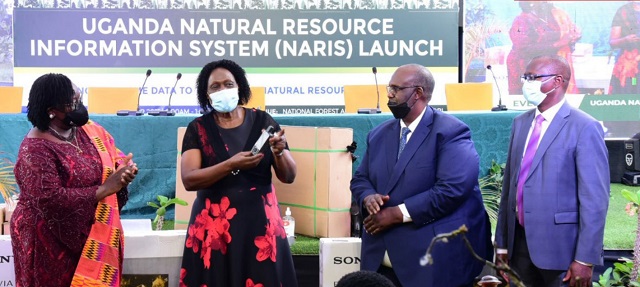
How new NFA tracking technology is improving monitoring and enforcement
Kampala, Uganda | RONALD MUSOKE | All Uganda’s forests will have disappeared in the next 30 years, if nothing is done to save them today. That is what the experts at the National Forestry Authority (NFA) say. But not many people believe them.
John Diisi is among the believers. He has worked in Uganda’s forest department for over 30 years.
Over that time, he has witnessed firsthand how the country’s forest cover has dwindled from around 5 million hectares in the early 1990s, which is almost three quarters of Uganda’s central region which covers 24 districts, to less than 1.5 million hectares today, which is about 20% of the same area.
In a recent interview, Diisi told The Independent that most of Uganda’s forests like Mabira were destroyed by charcoal burners and timber dealers mainly because forestry officials lacked the capacity to monitor and protect them.
Diisi describes how, until recently, the person in charge of Mabira Central Forest Reserve or any other forest in Uganda would have to walk or ride a motor bike or even drive a car to monitor events in a particular area within the forest reserve.
“If they saw a suspicious path within the forest, they would need to follow it up and eventually find a charcoal kiln and confirm that people are burning charcoal,” he says.
Fortunately, over this time, Diisi has also witnessed the gradual adoption of technology to fight forest destruction. And, it appears, no technology has excited him as much as what he has now.
Diisi is today the coordinator of the Geographic Information System (GIS) and Mapping at the National Forestry Authority (NFA). The GIS is now incorporated in a new system called the Natural Resource Information System (NARIS) which can be used to trigger real-time response to any unwanted activity in forests by enforcers.
The system, developed by the NFA in collaboration with the UNDP, enables Diisi and other authorized officers of NFA to know where exactly deforestation or even afforestation is happening.
“This system gives us what the people in the security sector refer to as ‘intelligence.’ I can now monitor a lot of things happening while I am seated in my office,” Diisi says excitedly. The technology can be useful for foresters superintending over hard-to-access reserves such as those located in mountainous, and water-logged or insecure areas.
“With this system, I can look over and monitor the whole of Mabira forest. I am able to show you where they are burning charcoal or cutting trees or cultivating crops. I will then call the on-ground people and point them to particular coordinates where something is going on.”
Diisi says if the NFA were to rely only on people on the ground to effectively monitor the country’s forest estate, as was the case before, it would need tens of thousands of personnel to do on-ground monitoring. Instead, his department relies on technology. When we spoke, there were
a few of his 10-strong personnel hunched in front of big computer screens, monitoring forest activity in almost real time.
These support about 250 on-ground personnel comprising sector managers, supervisors and patrol men who are further supported by the Environmental Protection Police Unit.
“Our job here is to inform those people in the field about what is happening in the field. If the field people go out in the forest and find charcoal kilns and timber being cut, they call for re-inforcement because the police force is not enough and they cannot be everywhere.”
The new system was developed by the NFA and UNDP after they recognised a gap in recent data to track deforestation in the country. It was officially unveiled on Nov.30.
Speaking at the launch of the system in Kampala, Tom Okello; the executive director of the NFA, said it will lead to a more coordinated approach to natural resource management in Uganda.
“What could be cut down on private land has been cut down; there is no more to cut down and so, what we are protecting now, we are protecting jealously,” Diisi said a few days later during our interview.
 The Independent Uganda: You get the Truth we Pay the Price
The Independent Uganda: You get the Truth we Pay the Price




There should be strict laws on deforestation.